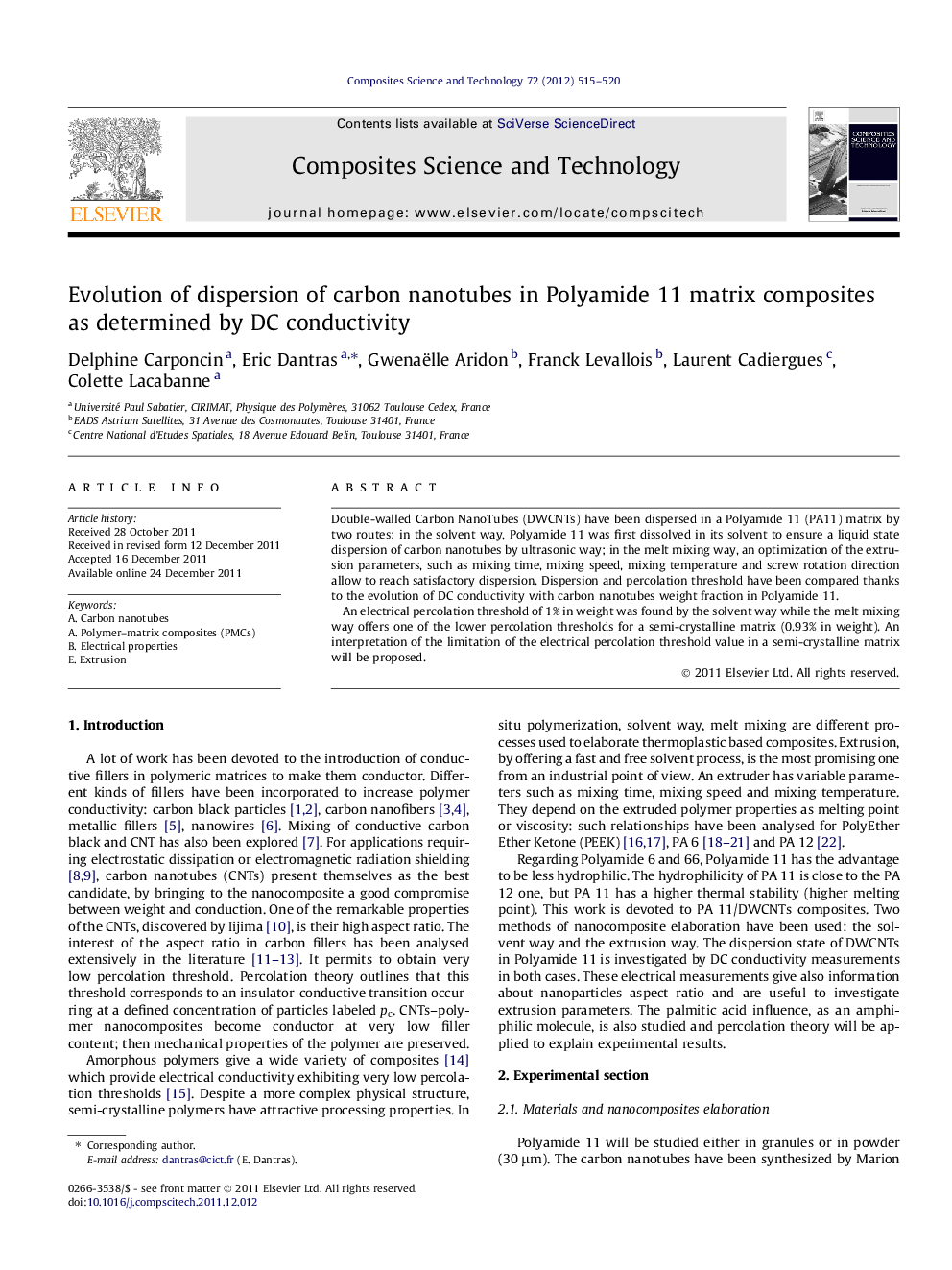| Article ID | Journal | Published Year | Pages | File Type |
|---|---|---|---|---|
| 820886 | Composites Science and Technology | 2012 | 6 Pages |
Double-walled Carbon NanoTubes (DWCNTs) have been dispersed in a Polyamide 11 (PA11) matrix by two routes: in the solvent way, Polyamide 11 was first dissolved in its solvent to ensure a liquid state dispersion of carbon nanotubes by ultrasonic way; in the melt mixing way, an optimization of the extrusion parameters, such as mixing time, mixing speed, mixing temperature and screw rotation direction allow to reach satisfactory dispersion. Dispersion and percolation threshold have been compared thanks to the evolution of DC conductivity with carbon nanotubes weight fraction in Polyamide 11.An electrical percolation threshold of 1% in weight was found by the solvent way while the melt mixing way offers one of the lower percolation thresholds for a semi-crystalline matrix (0.93% in weight). An interpretation of the limitation of the electrical percolation threshold value in a semi-crystalline matrix will be proposed.
